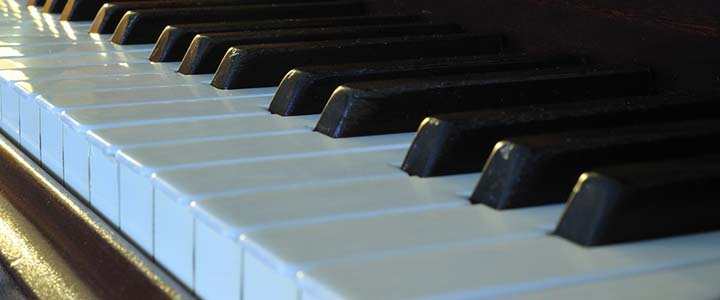The piano is an amazing instrument – versatile, melodious, and able to reflect the composer’s and pianist’s emotions through dynamic nuances. Whether you’re curious about the best way to learn piano for yourself, or to get your child or other family member playing, there’s a wonderland of possibilities open.
Of course, if you hope to one day play Gershwin, Scott Joplin, Mozart, Liszt, Lennon & McCartney, or anything in between, it all has to begin from square one, and that first step is approaching the best way to learn piano right from the very beginning.
With today’s “at your fingertips” technology in computer software, lessons via Skype, DVD or books with their own mp3 recordings of each lesson, there’s a veritable musical smorgasbord from which to choose.
Never counted out by any means, there’s still the traditional method of learning – enrolling in private piano lessons with a qualified teacher who can show you correct technique and provide immediate feedback.
For many reasons, the piano is an excellent instrument with which to begin one’s musical education. Compared to the saxophone, for example, which requires pressing down various combinations of keys to obtain each note, the notes on the piano always look the same, no matter in what octave. The black keys grouped in twos & threes serve as landmarks for note location, making it relatively easy to learn. That will undoubtedly be covered in your very first lesson, among other fascinating facts about the instrument and reading music.
Right now, let’s examine what is likely to be the best way to learn piano for you or your child.
Do-It-Yourself (DIY) Piano Instruction
This applies to any method where the student “flies solo,” including computer software programs, lesson books with DVD, CD or mp3, etc.
PROS:
- Cost-effective – probably the least expensive route.
- Student can learn completely at their own pace.
- Take your “lesson” any time, day or night, without coordinating a mutually convenient time for teacher & student.
CONS:
- If the student is not highly self-motivated & very disciplined with practice, progress may be more difficult.
- In the absence of a live teacher, students have no way of asking important questions about correct technique.
- Without a set lesson schedule and a live teacher to provide feedback and encouragement, the likelihood of significant progress is greatly reduced.
- No opportunities to play in a recital.
As far as cost-effectiveness, many students who have tried this route wind up abandoning their learning process pretty early on due to lack of encouragement, demonstration of how to play certain passages, and so on. So with books and software that wind up collecting more dust than use, this can actually be a waste of money. Worse than that, some DIY students wind up getting soured on the idea of learning and abandon their piano-playing dreams altogether.
Remote Lessons by Webcam
A relative newcomer to the field of music lessons, the teacher is in one location, student in another. Both must be in front of their computer screen, as well as a piano or keyboard. While perhaps a step up from DIY, there are two sides to this option as well.
PROS:
CONS
- Student & teacher must both have a high-speed resolution internet bandwidth/connection, so there’s reduced chance of signal disruption.
- Watching a 2-D image of how the teacher holds their hands, demonstrates playing a particular passage, uses technique, etc., might not give you the full experience of a private lesson, depending on your learning style.
- No real way to effectively orchestrate recitals or live performances that students & families can all enjoy.
In-Person Lessons
PROS:
- Instantaneous response to questions.
- Teacher can clearly demonstrate the correct way to play, side-by-side with the student
- The in-person aspect affords the student & teacher the best opportunity to develop rapport.
- Regular lesson times require dedication, discipline in practice/routine and definite goal-setting from one lesson to the next – still one of the best pathways to steady improvement in one’s piano playing ability. It’s motivational, & gives the student a regular opportunity to positively connect with music.
CONS
- In-person lessons may wind up costing a bit more than the other methods.
- You’ll need to either travel to your teacher’s location, or have them come to your home.
Whether you hope to someday play professionally, or are just playing the piano as a hobby, the old adage stands: “Anything worth doing is worth doing well.” Finding the best way to learn the piano for you is part of the battle.
Happy playing and good luck with your lessons!
Photo by rmrcrjr
Megan L.

